This article was published in Scientific American’s former blog network and reflects the views of the author, not necessarily those of Scientific American
You know, I really thought that I’d covered sigmodontines at some point before. But I haven’t.
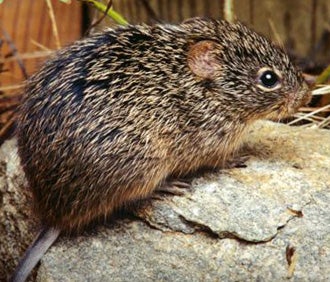
Sigmodon, namesake of the group. This is a Hispid cotton rat (S. hispidus). Credit: CDC Wikimedia
What are sigmodontines? They’re the New World mice or New World rats, a huge group of over 430 species in about 82 genera. They occur throughout the Americas except for the far north of North America. 68 of those 82 genera are endemic to South America. The majority are gnawing granivores or generalist omnivores of the sort considered typical for rodents of the mouse and rat kind, but there are also specialised insectivores, piscivores, arboreal frugivores and burrowers within the group. There is a lot of really neat diversity within this group.
On supporting science journalism
If you're enjoying this article, consider supporting our award-winning journalism by subscribing. By purchasing a subscription you are helping to ensure the future of impactful stories about the discoveries and ideas shaping our world today.
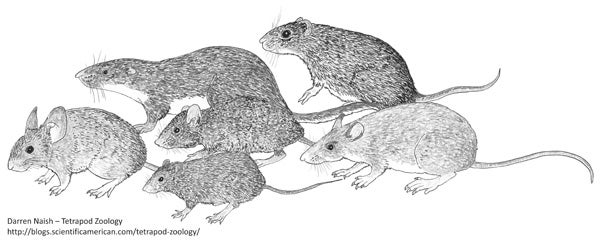
A sigmodontine montage - the animals here representing several (albeit not all) of the major sigmodontine lineages. From left to right: Phyllotis, Ichthyomys (at back), Thomasomys (middle), Akodon (front), Sigmodon (back) and Oryzomys (front). These illustrations are from my in-prep textbook on vertebrate history (on which go HERE). Credit: Darren Naish
A few anatomical characters – mostly related to the cheek dentition – might tie the members of Sigmodontinae together. There’s a tendency for accessory structures on the cheek teeth (the lophs and lophids) to be reduced and lost, the anterocone on the first upper molar is typically bilobed, and accessory rootlets are common (Lindsay 2007). The best data grouping them together, however, is molecular, since genetic studies have repeatedly found all sigmodontines to form a clade and, what’s more, to be a very young one: the entire radiation is less than about 16 million years old (e.g., Fabre et al. 2012, Parada et al. 2013, Vilela et al. 2014), its most speciose sections being less than a million years old (Schenk et al. 2013).
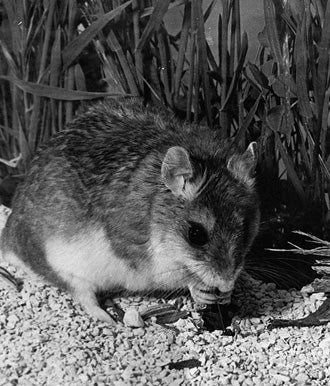
Onychomys, here consuming a grasshopper as per tradition. Image in public domain. But it’s no longer a sigmodontine. Credit: Energy.gov Flickr
You’ve likely already heard of some of the more familiar sigmodontines... they supposedly include American harvest mice (Reithrodontomys), climbing rats (Tylomys), and grasshopper mice (Onychomys), famous for their predatory leanings and habit of emitting a loud squeak in a ‘wolf howling at the moon’ type posture. HOWEVER, recent work has removed these ‘familiar’ taxa from the group: none of the three just listed are sigmodontines anymore, but are instead members of the closely related tylomyine and neotomine mouse groups. So we're left with a group that predominantly consists of more obscure taxa. Oh, you want obscure taxa? Well, fear not: there are many sigmodontines that lack common names. How about Rhagomys, Otonyctomys, Chilomys, Microakodontomys, Oecomys, Scolomys, Delomys, Thomasomys, Amphinectomys, Aepomys, Phaenomys, Rhipidomys, Graomys, Salinomys, Euneomys, Punomys, Rheomys, Anotomys… I think you get the idea. These are all extant taxa, by the way. Don’t get me started on the fossil ones.
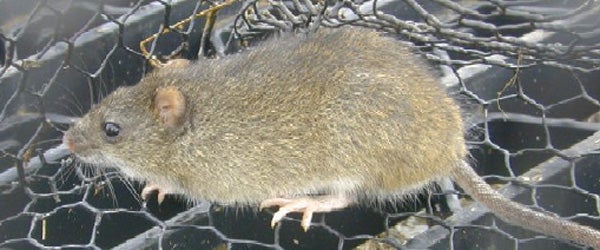
Marsh rice rat (Oryzomys palustris) photographed in Florida, one of eight species of Oryzomys rice rats. Credit: USGS Wikimedia
This group is so complex and sprawling that there have been several efforts to split it up into subsections, these mostly normally being identified as ‘Tribes’. McKenna & Bell (1997) listed 10 of these: Tylomyini for climbing rats and kin, Peromyscini for deer mice and kin, Oryzomyini for rice rats, Thomasomyini for Thomasomys and kin, Wiedomyini for Weidomys and kin, Akodontini for the South American grass mice and kin, Phyllotini for leaf-eared mice and kin, Sigmodontini for cotton rats, Scapteromyini for water rats and kin, and Ichthyomyini for fish-eating rats and kin. Another several additional ‘Tribes’ are recognised by other authors (like Reithrodontini for the coney rats), some of the groups included within Sigmodontinae by McKenna & Bell (1997) are no longer included within this group (namely Tylomyini and Peromyscini), and a bunch of taxa once regarded as akodontins have proved to warrant their own group, now termed Abrotrichini (D’Elía et al. 2007).
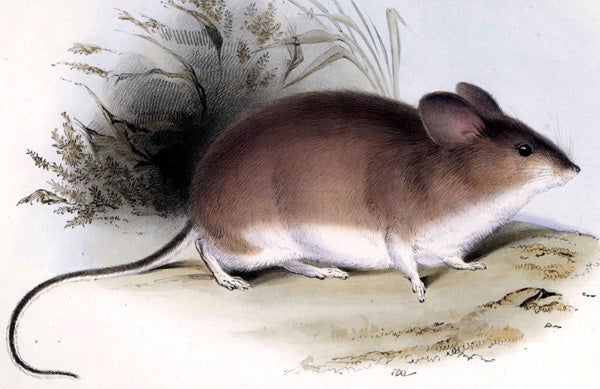
Darwin's leaf-eared mouse (Phyllotis darwini), one of approximately 20 Phyllotis species. Credit: George Robert Waterhouse Wikimedia
There have been several attempts to determine the relationships between these groups. Ichthyomyins and sigmodontins seem to be sister-groups (Parada et al. 2013, Schenk et al. 2013), their clade in turn being the sister-group to an assemblage that includes the remaining clades: this assemblage is termed Oryzomyalia (thought it’s been spelt Oryzomyala by some authors, sigh).
How sigmodontines should be classified is slightly contentious. They’re clearly muroids: that is, members of the enormous group that includes mice and rats, hamsters, gerbils and so on. Some experts regard them as a subgroup of Muridae (the group mostly associated with rats and mice more than with hamsters, voles and so on); others treat them as part of Cricetidae, the group otherwise well known for including hamsters. And then there are those who treat cricetids as part of Muridae.
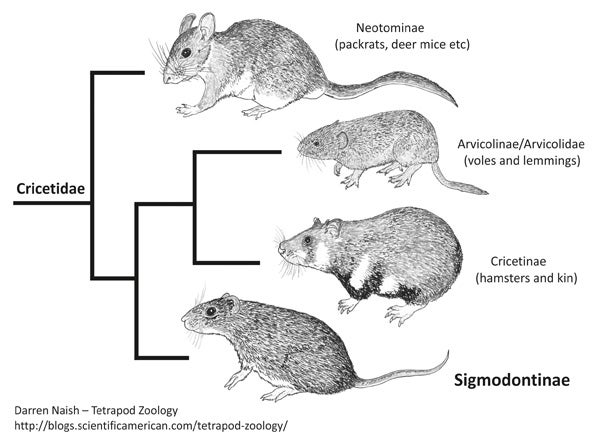
Simplified cladogram of Cricetidae, based on results depicted by Fabre et al. (2012). Illustrations from my textbook project (on which go HERE). Credit: Darren Naish
It’s a confusing mess and essentially comes down to what rank you want your names to be: in an unranked system, none of this matters much; anyway, it’s the relationships between the groups that matter. Recent phylogenies generally find sigmodontines to be close to a clade that includes Cricetinae (hamsters) and arvicolines/arvicolids (voles, lemmings and kin) (Michaux et al. 2001, Jansa & Weksler 2004, Parada et al. 2013).
In general, sigmodontines are small, none exceeding 30 cm in total length, and the majority are of standard mouse- or rat-like appearance. There are also vole-like taxa though, like the Chelemys mole mice. Naked tails are typical, as are mouse-like faces and large ears. Comically large ears are present in Phyllotis, the leaf-eared mice. Unusual taxa include the short-eared, short-tailed burrowing mice, the marsh rats with their enlarged, hair-fringed feet, and Anotomys – the Ecuadorian fish-eating rat – where the pinna of the ear is apparently absent.
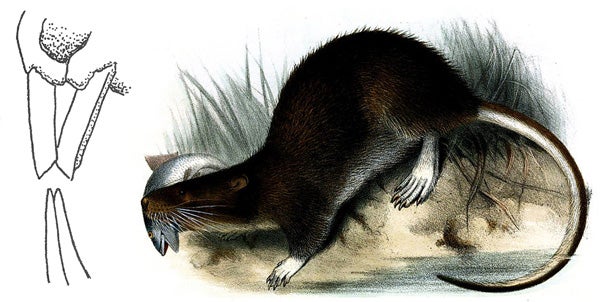
The fish-eating sigmodontine Ichthyomys, as illustrated by Joseph Smit. At left: the long and slender incisors of Ichthyomys, from Hanney (1977). Credit: Hanney 1977
Swimmers and diggers. Indeed, water-going habits are common in some branches of this group. Several of the Mexican and South American rice rats are semi-aquatic, sometimes subsisting mostly on aquatic snails and crustaceans. Rice rats are an interesting enough group that they really need to be covered on their own... yeah yeah, I’ll get to it eventually. Their history involves the evolution of (relative) giant size and island-endemic radiations like those of the Galapagos and Caribbean islands.
At the other extreme are the subterranean groups, like the shrew mice* and mole mice (grouped together within Oxymycterini). Shrew mice have reduced eyes and ears, reduced molars that are apparently linked to their mostly insectivorous lifestyle, and construct long tunnels. Mole mice include species adapted both to damp forests as well as dry grasslands and are noted for their proportionally large claws.
* Not to be confused with the Chrotomys shrew mice of the Philippines, covered here. They belong to a different branch of Muroidea.
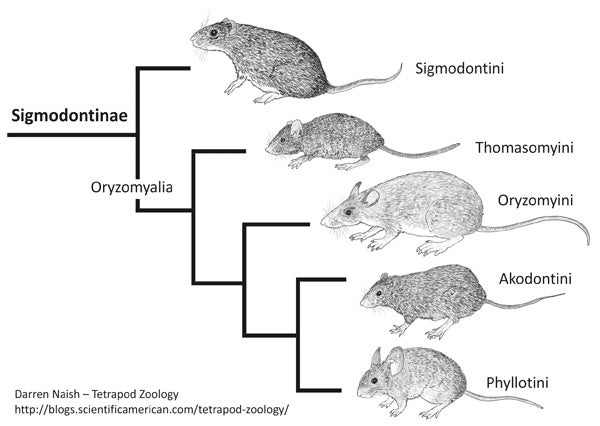
Several competing (though broadly similar) phylogenetic hypotheses for Sigmodontinae have been published. This is a simplified version of the cladogram generated by Vilela et al. (2014): it does not show all the sigmodontine lineages they depicted (more complete versions will appear here later). Credit: Darren Naish
Particularly big claws are also present in Scapteromys, the several species of swamp rat or Argentinean water rat. Having said that the claws are big, it has to be said that this is not particularly obvious in the live animals. Scapteromys is included by some authors in the same group (termed Scapteromyini) as a few other large, robust sigmodontines. Among these are the two Kunsia species, sometimes called giant rats, woolly rats, or woolly giant rats. These are among the largest of all sigmodontine species. Scapteromyins are included within Akodontini by some authors.
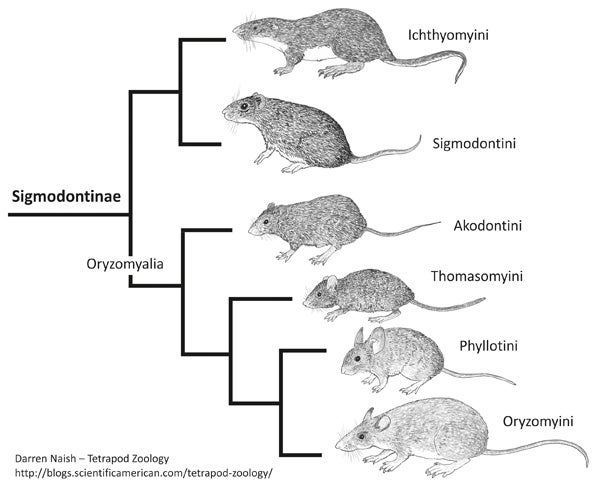
Another (simplified) sigmodontine cladogram: the topology here is the one recovered by Leite et al. (2014). Credit: Darren Naish
So – as is always always always the case, there is so much more to be said: remember that this group includes hundreds of species. But at least this article is something of what I hope is a useful introduction. I am – I promise – slowly working my way through all the muroid subgroups, and one day I might get there. One of the big questions about sigmodontines concerns their biogeographic history, and an enormous amount of work has been done on this issue. I deliberately haven’t mentioned it here and will instead be covering it in a separate article.
Here's a reminder that I've produced some particularly fetching rodent-themed merchandise. Note also that the pictures here are all relevant to my in-prep volume The Vertebrate Fossil Record. You can learn more about that project here.
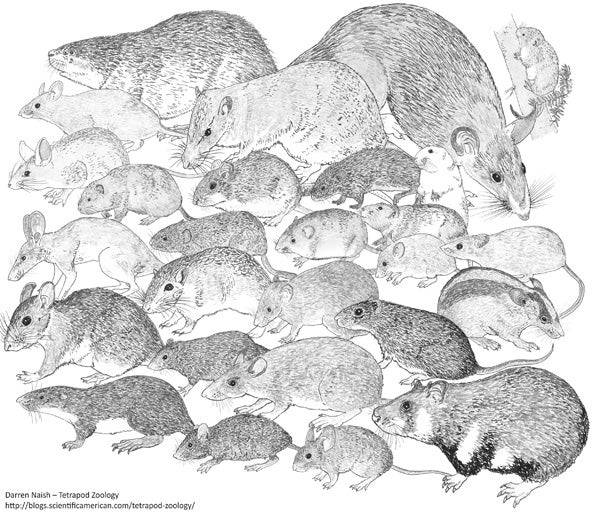
Muroids! Credit: Darren Naish
For previous Tet Zoo articles on muroids, see…
Refs - -
D’Elía, G., Pardiñas, U. F. J., Teta, P. & Patton, J. L. 2007. Definition and diagnosis of a new tribe of sigmodontine rodents (Cricetidae: Sigmodontinae), and a revised classification of the subfamily. Gayana 71, 187-194.
Lindsay, E. H. 2007. Cricetidae. In Janis, C. M., Gunnell, G. F. & Uhen, M. D. (eds) Evolution of Tertiary Mammals of North America, Vol. 2. Cambridge University Press, Cambridge, pp. 456-479.
Jansa, S. A. & Weksler, M. 2004. Phylogeny of muroid rodents: relationships within and among major lineages as determined by IRBP gene sequences. Molecular Phylogenetics and Evolution 31, 256-276.
Michaux, J., Reyes, A. & Catzeflis, F. 2001. Evolutionary history of the most speciose mammals: molecular phylogeny of muroid rodents. Molecular Biology and Evolution 17, 280-293.
Parada, A., Pardinas, U. F. J., Salazar-Bravo, J., D’Elía, G. & Palma, R. E. 2013. Dating an impressive Neotropical radiation: molecular time estimates for the Sigmodontinae (Rodentia) provide insights into its historical biogeography. Molecular Phylogenetics and Evolution 66, 960-968.
Schenk, J. J., Rowe, K. C. & Steppan, S. J. 2013. Ecological opportunity and incumbency in the diversification of repeated continental colonizations by muroid rodents. Systematic Biology 62, 837-864.
Vilela, J. F., Mello, B., Voloch, C. M. & Schrago, C. G. 2014. Sigmodontine rodents diversified in South America prior to the complete rise of the Panamanian Isthmus. Journal of Zoological Systematics and Evolutionary Research 52, 249-256.